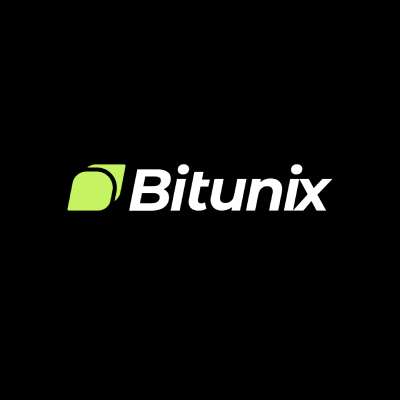Solana Foundation Chairman talks about a16z report: EVM bias exists and DePIN innovation is not mentioned
Original author: @calilyliu
Original translation: zhouzhou, BlockBeats
Nota del editor: This article reveals the EVM bias in the a16z report, ignoring Solanas outstanding performance in transaction fees, NFT, and DeFi markets. Although Solana has ranked among the top in NFT addresses and transaction volume in the past year, the report did not mention DePINs major innovations such as helium and Hivemapper. These breakthrough projects demonstrate the real-world applications of decentralized networks, especially the thriving desarrollo in the Solana ecosystem, which makes people look forward to the future.
The following is the original content (for easier reading and understanding, the original content has been reorganized):
I read the a16z State of Crypto report and it was a blast! While I’m primarily focused on areas outside of the EVM, I always appreciate the opportunity to learn about other innovations in the self-custody space. However, I nothielod a certain implicit EVM bias in the report. Here are some of my observations:
Lectura relacionada: a16z Annual Crypto Report
The author frames the world as EVM vs. non-EVM, creating a binary opposition that views ecosystems and developers who choose not to develop within the EVM as the “other.” For example, the visualization of active addresses is misleading. Solana has 100 million monthly active addresses, surpassing Base’s 22 million, yet the chart treats the two as almost identical. A more accurate approach would be to use a single bar chart, with EVM and non-EVM bars distinguished by different colors (if necessary). Additionally, the slides claim that “Base and Solana” have the highest monthly active addresses, but careful readers will notice that NEARProtocol has 31 million active addresses, surpassing Base. Therefore, the title should be changed to “…Solana and Near are the most active.”

Now lets talk about metric selection. Our industry often uses active addresses and total value locked (TVL) as standard benchmarks for the ecosystem. However, I propose a more meaningful way to measure the activity, demand, and overall health of the ecosystem: transaction fees. Transaction fees directly reflect the participation of users in valuable economic activities, their willingness to pay for execution, and the ability of validators to be profitable.
With the introduction of fee markets on Solana, we can now differentiate the economic value of different types of activity within the ecosystem and apply this approach to other ecosystems.
Solana has made significant progress in transaction fees. Before December 2023, Solanas monthly transaction fee market share never exceeded 1.5%. Since April 2024, it has remained consistently above 10%, peaking at 25% in July. When we take into account MEV tips to measure real economic value (REV), Solana is closing the gap! This chart from blockworksres highlights the closing of the REV gap between Solana and Ethereum.

This is another EVM-centric perspective that comes into the gaming space. Using mgas/s as a metric for evaluating gaming infrastructure excludes Solana and other non-EVM networks, leading to meaningless comparisons and giving us only a partial picture of the blockchain gaming ecosystem.

Another example is related to DeFi, where TVL is an inadequate metric for comparing DeFi activity, especially in key categories such as DEX, derivatives, and bridges, where volume is more relevant. While the report highlights overall DEX volume, it only provides a breakdown of protocols based on TVL, ignoring key aspects of liquidity activity.
TVL tends to favor ecosystems with large reserves but limited liquidity, such as Ethereum. While Solana’s TVL is only 10% of Ethereum’s, its monthly DEX volume in 2024 fluctuates between 50% and occasionally exceeding Ethereum. To accurately reflect on-chain economic activity, it is important to focus on the economic value of transactions, not just the value held. Against this backdrop, ecosystems with greater capital efficiency and superior on-chain performance stand out.

Among the comparable metrics across ecosystems, the report still focuses primarily on Ethereum and EVM L2. It sees the implementation of EIP-4844 as an important milestone in the industrys fee reduction. However, it is worth noting that Solanas transaction costs have also remained low since its launch in March 2020. In addition, in terms of transaction affordability, Solanas median fee has always been lower and more stable than Base.

Despite ranking first in NFT addresses, second in transaction volume, and fourth in unique collectibles over the past year according to nftpulseorg, Solana was once again excluded from this NFT comparison.
The slides mention low transaction costs driving new consumer behaviors, which is well illustrated by the example of drip haus, which has minted 182 million NFTs since March 2023 at a total cost of just 1,600 SOL (at a SOL price of $150, that’s just $0.001 per NFT), as noted by ledger top.

The lack of DePIN is very obvious. Helium is revolutionizing cellular networks and currently has more than 1 million active hotspots in 182 countries. Hivemapper uses decentralized networks for global mapping and has recorded more than 7.5 million kilometers of street data in more than 50 countries. Rendernetwork provides decentralized GPU rendering services, providing key computing power for industries such as games and artificial intelligence. This is an upgraded version of SETI@home, showing practical application value.
More importantly, most of these innovations are happening in Solana rather than the EVM ecosystem. Is this why DePIN is not mentioned at all in the report?
This article is sourced from the internet: Solana Foundation Chairman talks about a16z report: EVM bias exists and DePIN innovation is not mentioned
Related: Delphi Digital 10,000-word research report: ZetaChain, the future of universal applications
Introduction to Chain Abstraction Technology One of the big differences between Web3 and Web2 applications is how easy they are to use. Most users don’t understand the complex mechanisms behind Web2 applications. For example, when a user sends an email, they simply enter the content and click send. The system then handles communication between servers, data encryption, and spam without the user’s involvement. Similarly, when you use UberEats to order takeout, there is a very smooth but complex process behind it, including restaurant menu sorting, payment channels, and delivery tracking. The same is true for payment systems, messaging services, and other applications. All of these complex technologies behind them are abstracted away from the user. Not only that, but the application also adds automated processes on top of this. Netflix…







